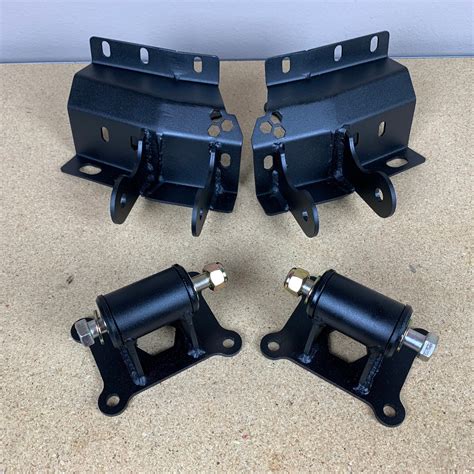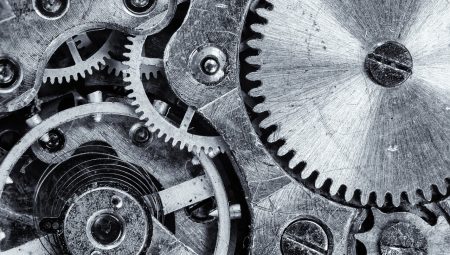Discover the importance of XJ engine mounts, signs of wear, and how to choose and replace them for optimal vehicle performance.When it comes to maintaining the performance and safety of your vehicle, the often-overlooked component of engine mounts plays a crucial role. XJ engine mounts, specifically designed for the XJ series vehicles, provide essential support, stability, and insulation between the engine and the chassis. Understanding the significance of these mounts is vital, as they not only affect the smooth running of your engine but also ensure a comfortable driving experience. Over time, however, engine mounts can wear out, leading to noticeable symptoms that indicate a need for replacement. In this blog post, we will explore what XJ engine mounts are, their importance in vehicle performance, common signs of wear, and how to effectively replace them. Additionally, we’ll guide you on choosing the right engine mounts to keep your vehicle running smoothly. Let’s dive in!
What are XJ engine mounts?
The XJ engine mounts are specialized components designed to secure the engine within the engine bay of a vehicle, specifically tailored for models like the Jeep Cherokee XJ, which was produced between 1984 and 2001. These mounts play a critical role in minimizing the transfer of vibrations from the engine to the chassis and interior, ensuring a smoother and quieter ride while simultaneously providing the necessary support to hold the engine in its correct position under various driving conditions.
Made typically from a combination of rubber and metal, XJ engine mounts are engineered to absorb engine vibrations and shocks, thus preventing undue stress on the engine and surrounding components. When functioning properly, these mounts not only enhance driving comfort but also prolong the lifespan of the engine and its related parts, as they prevent excessive movement that can lead to misalignment and damage over time.
In addition to their primary purpose of securing the engine, XJ engine mounts are also designed to accommodate the dynamic forces experienced during acceleration, deceleration, and turning, making them integral to the overall performance and safety of the vehicle. In summary, understanding what XJ engine mounts are and their role in automotive engineering can lead to better maintenance practices and improved vehicle longevity.
Importance of engine mounts
Engine mounts play a crucial role in the overall operation and functionality of a vehicle’s engine, as they serve to secure the engine in place within the engine bay while also absorbing vibrations and shocks generated during the engine’s operation, thereby enhancing the driving experience and prolonging the lifespan of various engine components.
The importance of engine mounts cannot be overstated, as they not only assist in maintaining the proper alignment of the engine, which is vital for the smooth operation of the vehicle, but they also facilitate the transfer of power from the engine to the drivetrain without allowing excessive movement that could lead to misalignment or damage.
Moreover, well-maintained engine mounts contribute significantly to the vehicle’s ride comfort, reducing the noise and vibrations transmitted to the cabin, and providing a more enjoyable experience for both the driver and passengers; thus, neglecting these seemingly minor components can lead to a cascade of issues, including increased wear on the engine and transmission, potentially leading to expensive repairs in the long run.
| Function | Impact of Worn Mounts |
|---|---|
| Secure Engine Position | Misalignment, increased wear on components |
| Absorb Vibrations | Increased cabin noise and discomfort |
| Transfer Power Smoothly | Trouble with acceleration and tracking |
The significance of engine mounts lies in their ability to merge structural support with comfort, making them vital for both the vehicle’s performance and the satisfaction of its occupants.
Common signs of worn mounts
When it comes to the operation of your vehicle, understanding the common signs of worn mounts is crucial for maintaining both performance and safety; the engine mounts play a vital role in securing the engine to the chassis while absorbing vibrations, and when these components begin to degrade, a multitude of issues can arise that may negatively impact the driving experience.
One prominent indication that your engine mounts may be worn is the increased level of vibrations felt within the cabin; as the mounts deteriorate, their ability to dampen excessive engine movement weakens, causing the driver and passengers to experience a more pronounced rumble that resonates throughout the vehicle – this is particularly noticeable during acceleration or deceleration, as the engine shifts more dramatically than it should.
Another red flag to observe is unusual engine movement, particularly if you notice the engine swaying or rocking when you accelerate, decelerate, or shift gears; such excessive engine movement often signifies that the engine mounts have lost their integrity, potentially leading to contact with other components in the engine bay and resulting in further mechanical issues over time.
Additionally, pay attention to any clunking sounds that may occur as the vehicle operates; these noises can often be attributed to the engine shifting in its position, striking surrounding elements such as the chassis or other components due to compromised mounts, underscoring the importance of addressing these symptoms promptly to avoid extensive repairs down the line.
Replacing engine mounts
When it comes to the overall performance and longevity of your vehicle, replacing engine mounts is a critical maintenance task that should not be overlooked, as these often-neglected components play a pivotal role in minimizing vibrations, ensuring proper alignment, and supporting the engine’s weight, thus contributing to a smoother driving experience.
One of the essential reasons for replacing engine mounts is to address wear and tear, which can occur due to factors such as engine heat and stress over time; this deterioration can lead to symptoms like excessive vibrations, misalignment, or even engine movement, which not only affects the comfort during driving but may also result in more severe mechanical problems down the line if left unaddressed.
Furthermore, replacing engine mounts generally involves a few critical steps, starting with the diagnosis of the symptoms of worn mounts, collecting the necessary tools and replacement parts, and completing the installation with precision to ensure that the new mounts are securely fastened, allowing the engine to perform optimally without any undue stress or instability.
In summary, recognizing the importance of timely replacement of engine mounts will ultimately lead to enhanced vehicle reliability and performance, ensuring that your engine operates as intended, providing both safety and efficiency in your daily driving experience.
Choosing the right engine mounts
When it comes to selecting the appropriate engine mounts for your vehicle, particularly if you drive a model equipped with the renowned XJ engine, it is crucial to consider several factors in order to ensure optimal performance, longevity, and comfort; these considerations include the type of driving you typically engage in, the environment in which your vehicle operates, and the materials used in the manufacture of the mounts themselves, which can significantly influence both vibration dampening properties and durability.
One important aspect to evaluate is whether you require stock replacement mounts or if you are looking for enhanced performance mounts that offer superior durability and vibration control; while stock mounts are often sufficient for regular driving in urban settings, serious off-road enthusiasts or those who engage in high-performance driving might benefit from polyurethane or solid mounts, which provide enhanced rigidity and responsiveness, albeit potentially at the cost of increased vibrations felt within the cabin.
Furthermore, a crucial step in the decision-making process is to consider the reputation and reliability of the manufacturers you are contemplating, as opting for well-reviewed brands can often lead to better performance and peace of mind, and it is also advisable to consult your vehicle’s manual or a professional mechanic for specific recommendations tailored to your XJ engine model to ensure that you are making an informed choice that aligns with your driving needs.
Frequently Asked Questions
What are the primary functions of xj engine mounts?
The primary functions of xj engine mounts are to secure the engine to the vehicle’s chassis, absorb vibrations, and support the weight of the engine.
How do I know if my xj engine mounts need replacement?
Signs that your xj engine mounts may need replacement include excessive engine movement, vibrations felt in the cabin, or visible cracking or damage on the mounts.
What materials are commonly used for xj engine mounts?
XJ engine mounts are typically made from rubber, polyurethane, or metal, each offering different levels of durability and performance.
Can worn xj engine mounts affect vehicle performance?
Yes, worn xj engine mounts can lead to misalignment of engine components, resulting in decreased performance, poor handling, and potential damage to the vehicle.
Are there any specific tools required for replacing xj engine mounts?
Common tools required for replacing xj engine mounts include a jack, jack stands, socket set, and possibly a torque wrench, depending on the vehicle specifications.
How long does it typically take to replace xj engine mounts?
Replacing xj engine mounts can take anywhere from 2 to 4 hours, depending on the mechanic’s skill level and the specific vehicle setup.
Is it advisable to upgrade to performance engine mounts for the xj?
Upgrading to performance engine mounts can be advisable for those seeking enhanced stability and handling, particularly in high-performance or off-road applications.





